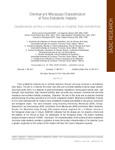
Please use this identifier to cite or link to this item:
http://ricaxcan.uaz.edu.mx/jspui/handle/20.500.11845/857Full metadata record
| DC Field | Value | Language |
|---|---|---|
| dc.contributor | 121534 | es_ES |
| dc.contributor.other | https://orcid.org/0000-0002-1513-4971 | - |
| dc.contributor.other | 0000-0002-1513-4971 | - |
| dc.contributor.other | https://orcid.org/0000-0002-1513-4971 | - |
| dc.contributor.other | 0000-0002-1513-4971 | - |
| dc.contributor.other | https://doi.org/10.48779/z4h8-nm86 | - |
| dc.coverage.spatial | Global | es_ES |
| dc.creator | Larios Cervantes, Alexis | - |
| dc.creator | Aguilera Galaviz, Luis Alejandro | - |
| dc.creator | Flores Reyes, Héctor | - |
| dc.creator | Baltazar Hernández, Víctor Hugo | - |
| dc.creator | Rodríguez, Crescencio | - |
| dc.creator | Gaitán Fonseca, César | - |
| dc.date.accessioned | 2019-03-26T16:55:27Z | - |
| dc.date.available | 2019-03-26T16:55:27Z | - |
| dc.date.issued | 2017-08 | - |
| dc.identifier | info:eu-repo/semantics/publishedVersion | es_ES |
| dc.identifier.issn | 1659-1046 | es_ES |
| dc.identifier.uri | http://localhost/xmlui/handle/20.500.11845/857 | - |
| dc.identifier.uri | https://doi.org/10.48779/48j9-vd62 | - |
| dc.identifier.uri | https://doi.org/10.48779/y7b4-g017 | - |
| dc.description | Los implantes trans-endodónticos son una extensión artificial a través del ápice radicular anclado en el tejido óseo periradicular. El objetivo es mejorar la relación corona-raíz y proporcionar estabilidad al órgano dental presente. El óxido de zirconio (ZrO2) es un material de gran importancia tecnológica, con buen color natural, alta resistencia, alta tenacidad, alta estabilidad química, no sufre corrosión, resistencia química y microbiana y excelentes propiedades estéticas. Objetivo: El objetivo de este estudio fue evaluar las condiciones superficiales de ZrO2 para su aplicación clínica a los implantes transendodónticos. Materiales y Métodos: se trituraron bloques de ZrO2 en implantes trans-endodónticos y se dividieron en: monoclínico y tetragonal. Luego se evaluaron mediante microscopía electrónica de barrido (SEM), espectroscopia de rayos X de energía dispersiva (EDS) y microscopio de fuerza atómica (AFM) y microdureza vickers. Resultados: La fase monoclínica a través del análisis AFM presenta Ra = 0.320 μm, mientras que en la fase Tetragonal es 0.126 μm, SEM / EDS muestra que las fases no son adecuadamente uniformes y la adición del Ytrio para favorecer la estabilización de la fase tetragonal. El análisis de microdureza mostro un valor de 1500HV. Conclusión: La caracterización de la superficie de los implantes trans-endodónticos de óxido de zirconio, brinda una pauta para conocer las características superficiales del material, ya que al haber una mayor rugosidad en la superficie del implante se verá favorecida la capacidad de oseointegración. | es_ES |
| dc.description.abstract | Trans-endodontic implants are an artificial extension through root apex anchored in periradicular bone tissue. The aim is to improve the crown-root ratio and to provide stability to dental organ present. Zirconium oxide (ZrO2) is a material of great technological importance, having good natural color, high strength, high toughness, high chemical stability, does not suffer any corrosion, chemical and microbial resistance and excellent esthetic properties. Objective: The aim of this study was to evaluate chemical and microscopy of surface conditions of ZrO2 trans-endodontic implant. Materials and Methods: A blocks of ZrO2 were manufactured for produce trans-endodontic implants and divided in two groups: monoclinic and tetragonal phase. They were evaluated using Scanning Electroning Microscope (SEM), Energy- Dispersive X-ray Spectroscopy (EDS), and Atomic Force Microscope (AFM) and Vickers Micro hardness. Results: The Monoclinic phase through AFM analysis showed roughness Ra = 0.320μm, whereas in the Tetragonal phase was 0.126μm, SEM/EDX indicated that the phases are not properly uniform and the addition of the Yttrium to favor the stabilization of the Tetragonal phase. The Vickers hardness analysis showed a value of 1500HV. Conclusion: The characterization of the surface of trans-endodontic zirconium oxide implants provides a guideline to know the surface characteristics of the material, since a greater roughness on the surface of the implant will favor the Osseo-integration capacity. | es_ES |
| dc.language.iso | eng | es_ES |
| dc.publisher | Universidad de Costa Rica | es_ES |
| dc.relation | https://revistas.ucr.ac.cr/index.php/Odontos/article/view/30282 | es_ES |
| dc.relation.uri | generalPublic | es_ES |
| dc.rights | Atribución-NoComercial-CompartirIgual 3.0 Estados Unidos de América | * |
| dc.rights.uri | http://creativecommons.org/licenses/by-nc-sa/3.0/us/ | * |
| dc.source | ODOVTOS International Journal of Dental Sciences Vol. 20, No. 2 pp. 89-97 | es_ES |
| dc.subject.classification | MEDICINA Y CIENCIAS DE LA SALUD [3] | es_ES |
| dc.subject.other | Trans-endodontic implants | es_ES |
| dc.subject.other | Zirconium oxide | es_ES |
| dc.subject.other | Scanning electron microscope (SEM) | es_ES |
| dc.subject.other | Energy-dispersive X-ray spectroscopy (EDS) | es_ES |
| dc.subject.other | Atomic force microscope (AFM) | es_ES |
| dc.subject.other | Vickers hardness | es_ES |
| dc.subject.other | Implantes trans-endodónticos | es_ES |
| dc.subject.other | Óxido de zirconio | es_ES |
| dc.subject.other | Microscopio electrónico de barrido (SEM) | es_ES |
| dc.subject.other | Espectroscopia de rayos X de energía dispersiva (EDS) | es_ES |
| dc.subject.other | Microscopio de Fuerza Atómica (AFM) | es_ES |
| dc.subject.other | Microdureza de vickers | es_ES |
| dc.title | Chemical and Microscopy Characterization of Trans-Endodontic Implants | es_ES |
| dc.title.alternative | Caracterización química y microscópica de implantes Trans-endodónticos | es_ES |
| dc.type | info:eu-repo/semantics/article | es_ES |
| Appears in Collections: | *Documentos Académicos*-- UA Odontología | |
Files in This Item:
| File | Description | Size | Format | |
|---|---|---|---|---|
| F Chemical and microscopy.pdf | 213,19 kB | Adobe PDF |  View/Open |
This item is licensed under a Creative Commons License
